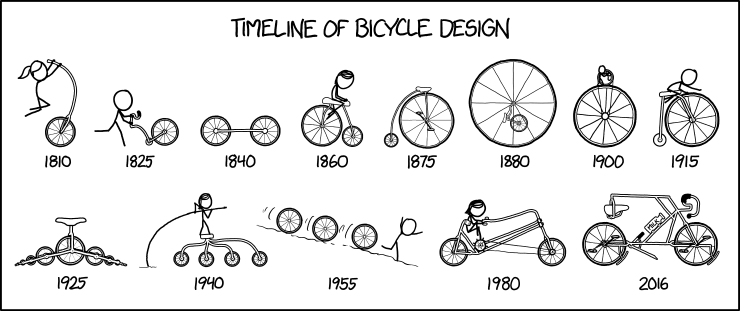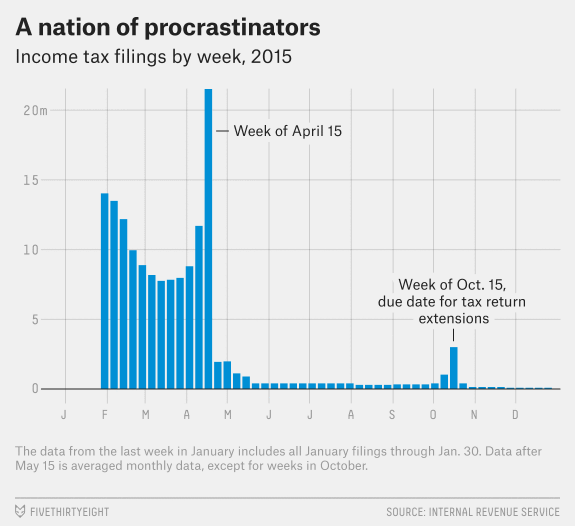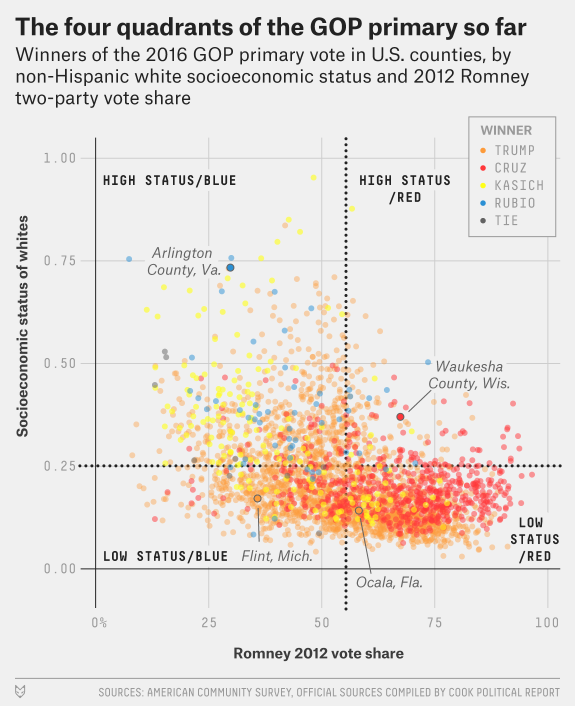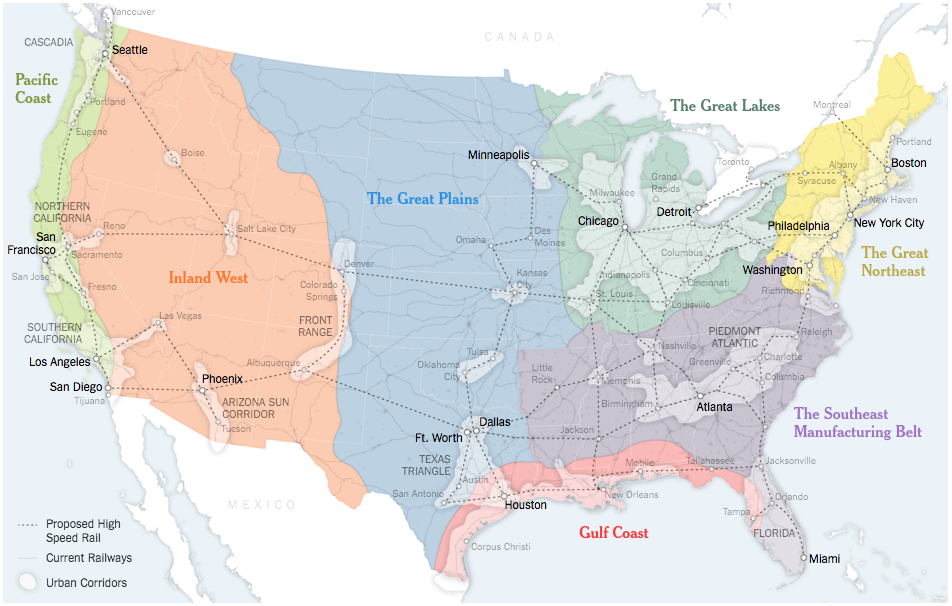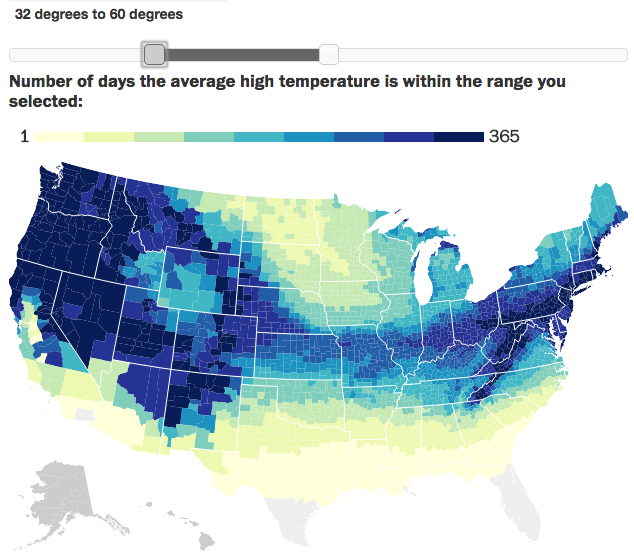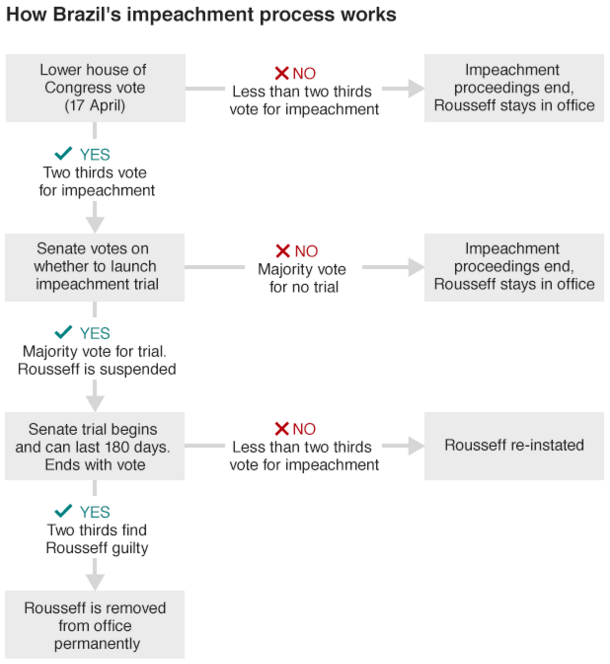Donald Trump will be the Republican Party candidate for President of the United States.
Last summer I never imagined I would type those words in all seriousness, but after Trump won a majority of the votes in Indiana and likely swept all the delegates there, Ted Cruz suspended his campaign.
Two graphics strike my mind to best capture the story. The first is from last summer when FiveThirtyEight added Donald Trump to an existing graphic that loosely mapped out which candidates belonged to which factions of the Republican Party.
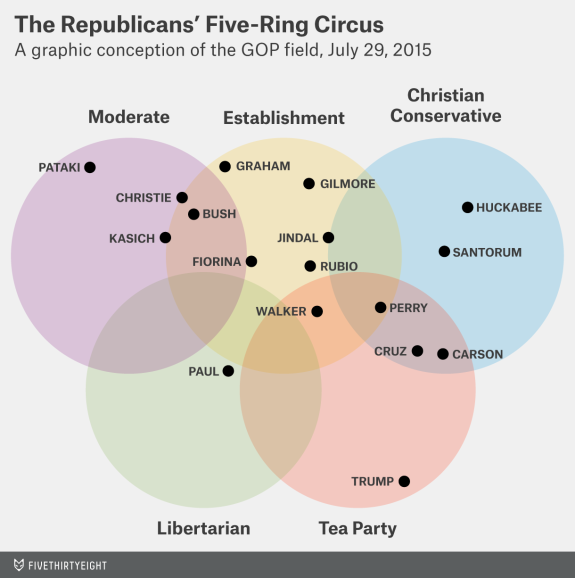
You can clearly see Donald Trump falls as an outlier at the extreme end of the Tea Party circle. This would be the argument that Trump is not a true conservative. But how did that argument play out over the following months?
Well this New York Times results map breaks down results to the county level. And you can see a lot of Trump red.

It started with wins in New Hampshire and, more importantly South Carolina. Candidates try to win Iowa and New Hampshire and whatever other states there are prior to Super Tuesday, because Super Tuesday requires a ground game that is expensive to maintain. And early victories lead to donations. But Trump’s crushing victory in South Carolina led to a series of wins in the deep Republican red South.
Importantly for this last phase of the contest, the Cruz campaign had bet on winning those very same southern states, the Bible Belt. While Cruz won Texas, it was his home state, he lost almost every other state. The map above shows just how wide and diverse Trump’s victories were. From liberal Massachusetts to Alabama and as far west as Arizona. The final one-two blow, however, came in the above map’s deepest reds: a swath from Rhode Island through Connecticut and New York into Pennsylvania then south into Delaware and Maryland. Trump was favoured in the Northeast and Mid-Atlantic, but most had not expected those margins. The second blow, look at the deep red in Indiana. Cruz needed to win Indiana. He lost it big. And now he has stepped aside.
Donald Trump will be the Republican Party candidate for President of the United States.


